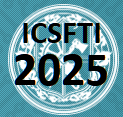NASCA METHOD: A COMBINED CNN-CVAE METHOD FOR MULTI-CLASS RESPIRATORY DISEASE DETECTION FROM AUSCULTATION DATA
Keywords:
auscultation, deep learning, convolutional neural networks, variational autoencoder, respiratory disease detectionAbstract
This paper presents the NASCA method, which combines convolutional neural networks (CNN) and convolutional variational autoencoders (CVAE) to enhance the classification of lung auscultation sounds under limited and imbalanced data conditions. The method integrates data preprocessing, synthetic augmentation, and robust deep learning classification with strict control against data leakage. Experiments conducted on the ICBHI dataset achieved an F1-score of 98.45% in multi-class classification. The results confirm the potential of NASCA for improving early respiratory disease detection.
References
Gibson G. J., Loddenkemper R., Lundbäck B., Sibille Y. Respiratory health and disease in Europe: The new European Lung White Book. Eur. Respir. J. 2013; 42(3): 559–563. DOI: 10.1183/09031936.00105513.
Abbas A., Fahim A. An automated computerized auscultation and diagnostic system for pulmonary diseases. J. Med. Syst. 2010; 34(6): 1149–1155. DOI: 10.1007/s10916-009-9334-1.
Fraiwan L., Hassanin O., Fraiwan M., Khassawneh B., Ibnian A. M., Alkhodari M. Automatic identification of respiratory diseases from stethoscopic lung sound signals using ensemble classifiers. Biocybern. Biomed. Eng. 2021; 41(1): 262–273. DOI: 10.1016/j.bbe.2020.11.003.
Fraiwan M., Fraiwan L., Alkhodari M., Hassanin O. Recognition of pulmonary diseases from lung sounds using convolutional neural networks and long short-term memory. J. Ambient Intell. Humaniz. Comput. 2021; 13: 1–13. DOI: 10.1007/s12652-021-03184-y.
Kim Y., Hyon Y., Jung S. S., Lee S., Yoo G., Chung C. Respiratory sound classification for crackles, wheezes, and rhonchi in the clinical field using deep learning. Sci. Rep. 2021; 11(1): 17186. DOI: 10.1038/s41598-021-96724-7.
Rocha B. M., Filos D., Mendes L., Serbes G., Ulukaya S., Kahya Y. P. et al. An open access database for the evaluation of respiratory sound classification algorithms. Physiol. Meas. 2019; 40(3): 035001. DOI: 10.1088/1361-6579/ab03ea.
Kingma D. P., Welling M. Stochastic gradient VB and the variational auto-encoder. In: Proc. of the 2nd Int. Conf. on Learning Representations (ICLR); 2014: 1–13.
Ma Y., Xu X., Li Y. LungRN+NL: An improved adventitious lung sound classification using non-local block ResNet neural network with mixup data augmentation. In: Proc. Interspeech 2020; 2020: 2857–2861. DOI: 10.21437/Interspeech.2020-2487.
Pham L., Phan H., Palaniappan R., Mertins A., McLoughlin I. CNN-MoE based framework for classification of respiratory anomalies and lung disease detection. IEEE J. Biomed. Health Inform. 2021; 25(8): 2938–2947. DOI: 10.1109/JBHI.2021.3064237.
Taşar B., Yaman O., Tuncer T. Accurate respiratory sound classification model based on Piccolo pattern. Appl. Acoust. 2022; 188: 108589. DOI: 10.1016/j.apacoust.2021.108589.




